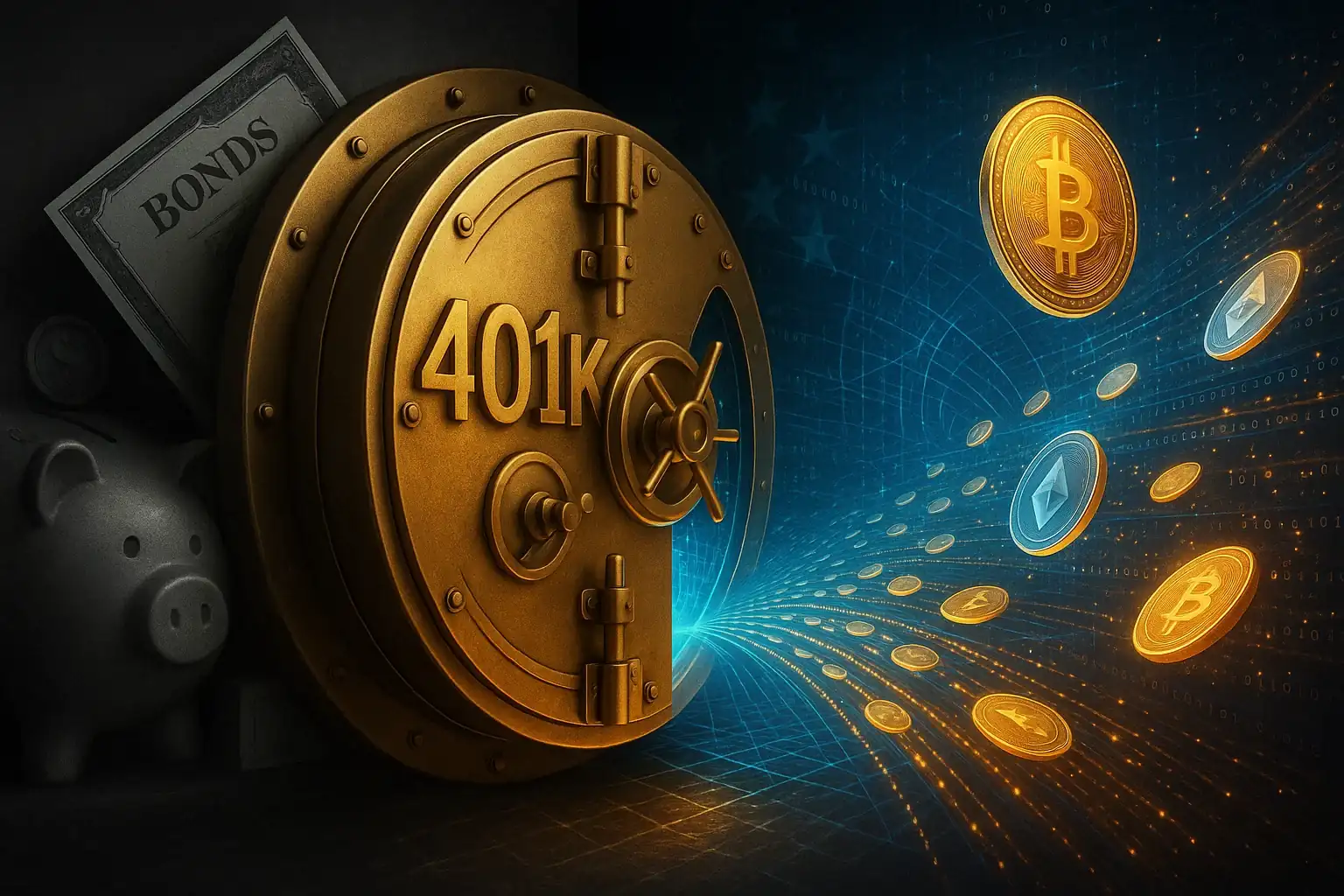
Cryptocurrencies in US Pension Funds: Historical Turn
US approves cryptocurrencies in 401(k) pension plans: revolution for 84 million workers.

US approves cryptocurrencies in 401(k) pension plans: revolution for 84 million workers.

Get the latest news, learn from experts, discover new tools, and find inspiration right in your inbox.
No spam. Unsubscribe anytime.
A powerful documentary on how Bitcoin and blockchain are reshaping money, power, and geopolitics—from El Salvador’s Bitcoin experiment and Europe’s regulatory revolution to the rise of decentralized finance and the new global financial order.
For the first time since the inception of the US pension system, government agencies have officially authorised the inclusion of cryptocurrencies in retirement savings, so-called 401(k) plans.
The US Department of Labor, along with other regulators, has given the green light to investing in digital assets as part of long-term retirement strategies. This decision could affect millions of workers and change the structure of retirement portfolios across the country.
Today, some 84 million Americans participate in such programmes and the total assets accumulated in 401(k) accounts are estimated at over $7 trillion. Until recently, investing in cryptocurrencies was forbidden or otherwise in a grey area. Now the rules have become clearer: under certain conditions, digital assets can become part of long-term savings.
The Department of Labour has developed a new regulatory framework that specifies the types of assets permitted, the conditions for their inclusion, and risk assessment mechanisms. The regulation also includes measures to protect investors, particularly those who do not have in-depth knowledge of cryptocurrencies. Pension fund managers will be required to provide participants with full information on the risks, fees and potential volatility of such investments.
Financial Revolution in the System 401(k)
The introduction of cryptocurrencies in pension plans is driven not only by the development of the digital economy, but also by the pressure of the younger generation. Millennials and Generation Z have long expressed interest in investing in crypto assets, seeing them as an integral part of their financial future. According to recent surveys, a significant number of workers under 40 are in favour of including cryptocurrencies in their retirement portfolios.
This generational shift reflects a growing distrust of traditional financial systems and a desire for greater autonomy and innovation in personal wealth management. Younger workers, who are generally more tech-savvy and comfortable with digital platforms, are more inclined to explore blockchain-based investment vehicles.
They see cryptocurrencies not just as speculative assets, but as long-term stores of value with the potential to outperform traditional investments. Employers and pension fund providers now face the challenge of adapting to these new expectations by offering modern and flexible financial products in line with the needs of a digitally native workforce.
However, experts warn that despite the attractiveness of potential returns, risks remain high. Volatility, insufficient liquidity, custody security issues and regulatory uncertainties can negatively affect savings. It is recommended to limit the share of cryptocurrencies in retirement portfolios to 5-10% of total assets and to choose platforms and management funds carefully.
A Gradual But Inevitable Integration
It is worth noting that the introduction of cryptocurrencies into 401(k) plans will be gradual. Even after the new rules are approved, much will depend on the initiative of employers and financial intermediaries. These will have to adapt their pension offers, implement appropriate tools and train employees. It will also be necessary to create new products, such as specialised crypto funds or stable investment packages based on fixed-value tokens.
The US is thus taking an important step towards integrating decentralised finance into the traditional economic system. This not only expands the possibilities for diversifying retirement portfolios, but also brings digital technologies closer to the daily lives of millions of citizens. The real question is: how effectively will this transition be implemented and who will benefit most from it?
Read Next
Stablecoin: clash between crypto and US banking lobbies
Over 125 crypto companies challenge the US banking lobby over the right to offer returns on stablecoins, with the GENIUS Act in their sights.
Wallet Silk Road moves BTC after years of inactivity
Bitcoin wallets linked to Silk Road are back in business after years, showing on-chain consolidations and new risk analysis.
US: CFTC approves leveraged Bitcoin spot trading
The CFTC approves leveraged spot trading on Bitcoin in the US for the first time, paving the way for institutional investors.
Bitcoin rebounds: Fed effect + Vanguard ETFs
Bitcoin surpasses $93,000 thanks to the end of the Federal Reserve's quantitative tightening and Vanguard's opening to crypto products.